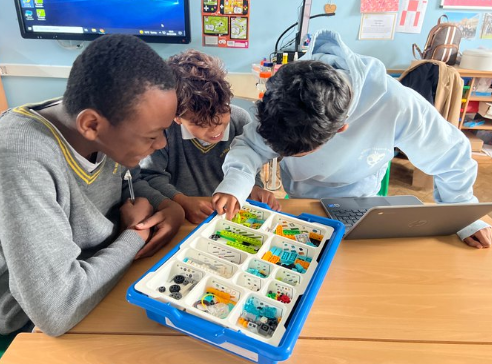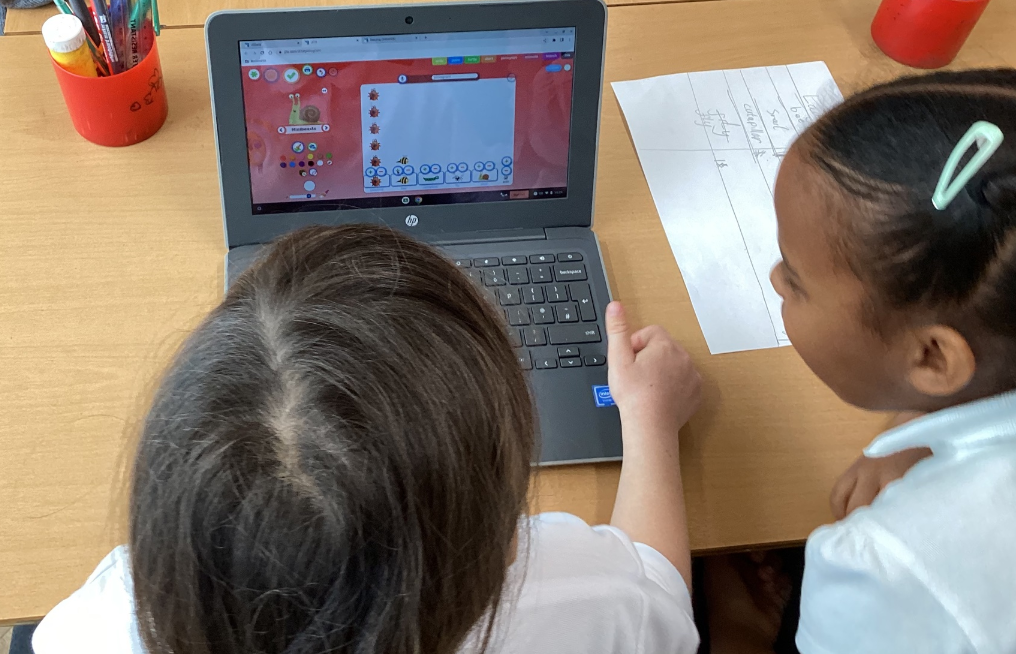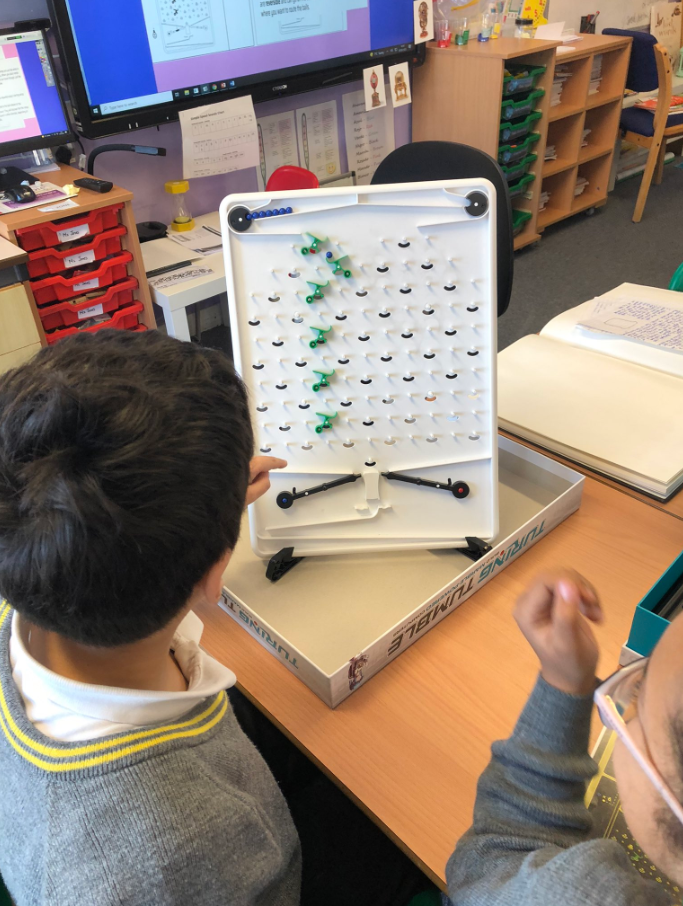Computing Curriculum Overview
| Early Years Computing | ||||||
|---|---|---|---|---|---|---|
| Understanding the world Our role play area includes tills, mouse and a keyboard. |
Literacy Children create stories about a BeeBot’s journey. This is linked to traditional tales. |
Physical Development Children develop their fine motor skills by manipulating devices. |
Communication and language Children learn to use precise instructions e.g. making playdough recipes. |
Personal, social and emotional development Read a range of online safety books e.g. Chicken Clicking and Smartie the Penguin. |
Expressive arts and design Children create pictures and videos using iPads and the interactive whiteboard. |
Mathematics Children develop understanding of left, right and directional language. |
| Year | 1 | 2 | 3 | 4 | 5 | 6 |
|---|---|---|---|---|---|---|
| Autumn 1 | Online safety – personal information | Online safety – Games and Apps | Online safety – Communication devices | Online safety – Cyberbullying | Online safety – Social media | Online safety – Behaviour and wellbeing |
| Autumn 2 | Digital Writing | Digital Photography | Animation | Audio Editing | Video Editing | Web Page Creation |
| Spring 1 | Moving A Robot | Robot Algorithms | Scratch – sequence in music | Lego WeDo – send messages | Scratch – selection in quizzes | Turing Tumbles |
| Spring 2 | Scratch Jr - Introduction to Animation | Scratch Jr – introduction to quizzes | Lego WeDo – Moon Base | Scratch – repetition in games | Turing Tumbles | Scratch – variables in games |
| Summer 1 | Grouping Data | Pictograms | Branching Databases | Data Logging | Flat File Databases | Lego WeDo – grabbing objects |
| Summer 2 | Technology Around Us | IT Around Us | Connecting Computers | The Internet | Lego WeDo – Volcano Alert | Communication – search engines |
Intent
Our computing curriculum is creative, critical and collaborative with an underpinning emphasis on online safety. Our children love to explore computing functions as they work towards a creative output. At the heart of our computing curriculum is the idea that William Hogarth children are ‘computational thinkers’. This empowers children to solve problems and to better conceptualise computer-based technology.
Hogarth computational thinkers transfer their skills learnt in computing to other areas of the curriculum and their lives. Children learn key computing ideas through practical hands on experiences. Our computing curriculum inspires children in today’s world and better prepares them for the future.
Implementation
We have organised our computing curriculum into three strands. As a school we cover each strand at the same time. This enables a whole school community response to computing.
- Digital literacy
- Computer Science
- Information technology
Digital Literacy
In the first half term of autumn children complete an online safety unit of work developed by PiXL. Children explore a wide range of online safety situations and discuss the benefits and risks posed online. This learning is evidenced in our PSHE floor books. In the second half of autumn each class explores multimedia such as photography, animation, audio or video editing and web page creation.
Computer Science
In spring term each year group has a focus on computer science. We use the NCCE materials to teach children key coding and programming skills. In Key stage 1 children use floor robots such as BeeBots and Scratch Jr to embed their knowledge of algorithms, debugging and logical reasoning. Key Stage 2 pupils learn how to use sequence, selection, repetition and variables in programs by using Scratch, Turing Tumbles and Lego WeDo.
Information Technology
In the summer term children develop their understanding of information technology. Pupils use computer software to handle data and answer real world questions. As children progress through the school they enhance their knowledge of technological devices, the internet and computer networks. Throughout children are supported to use technology safely and respectfully in school and in their lives outside of school.
Impact
Our computing curriculum has had a great impact on children’s learning, attitudes and safety when using technology inside and outside of school. It has a clear progression which is sequenced with defined end points as children share what they have learnt throughout the unit. We conducted a pupil voice survey to which the response showed that 97% of children thought they had made progress and the vast majority believing they had learnt more this year as a result of our fresh computing curriculum. Below are some examples of different year groups exploring their computing units:

Children developed a prosthetic hand device using Lego WeDo.

Children are computational thinkers and we encourage tinkering, debugging and perseverance.

Here pupils have explored the terms decomposition, pattern recognition, logical reasoning and algorithms.

Learning these computational terms has supported children’s thoughts and processes during computer science units.

In a handling data unit children started by creating tally charts based on minibeasts they could see then they created a pictogram on Chromebooks.

Turing Tumbles are used for children to discover how computers work. Children learn to use different parts such as bits, interceptors, crossovers and gears.